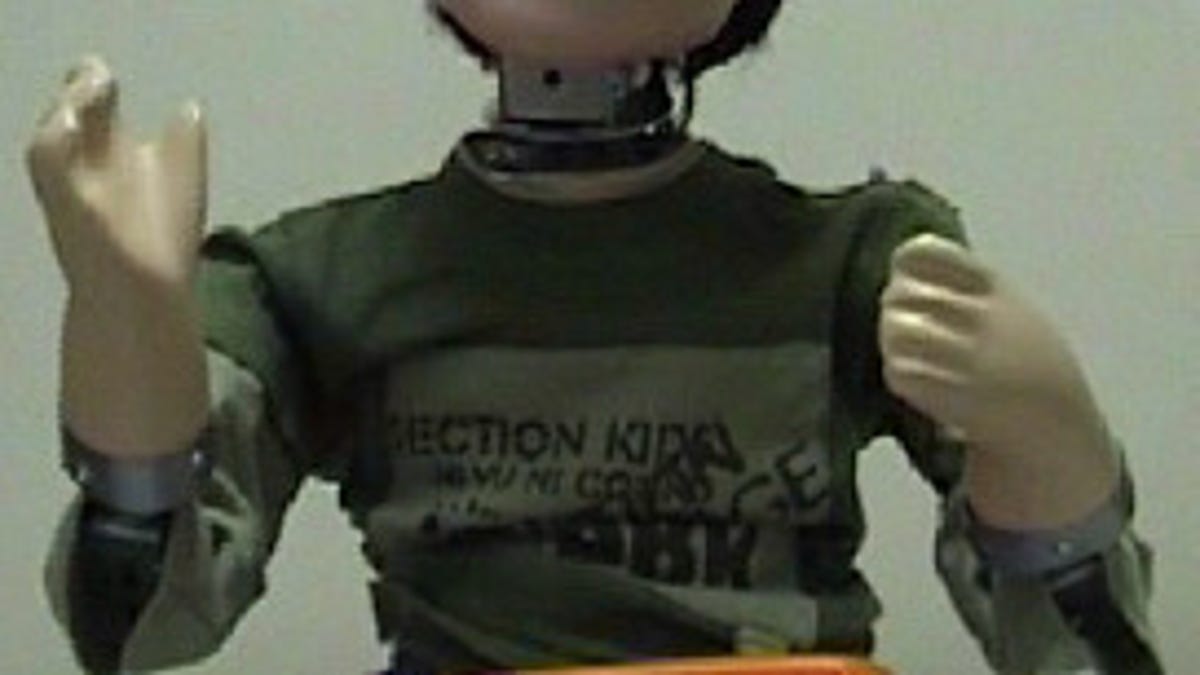Kaspar the friendly robot helps autistic kids
A child-size humanoid bot with a face inspired by comics is being used to teach interaction skills to kids who may lack an instinctive understanding of social cues.

A playful child-size humanoid robot with a face inspired by comics and Japanese Noh theater is being used to help teach autistic children social skills.
Kaspar (Kinesics and Synchronisation in Personal Assistant Robots), developed at the U.K's University of Hertfordshire, has a minimally expressive face so it doesn't "overwhelm" its play partners with social cues, thus allowing them to individually interpret the expressions as "happy," "neutral," "surprised," and so on, as they interact with the robot toy.
Makers of the bot--which has been in development for a few years now but is currently on display to the public through Friday at London's Science Museum--deliberately took a low-cost approach to Kaspar so future research or commercial versions would be simple to make and easy to transport with on-board processing and battery power.
They built the robot for $2,500 using a child-shaped mannequin for the body's base, off-the-shelf parts, and silicone-rubber RoboSkin with embedded tactile sensors that detect different kinds of touch.
Kaspar has minimal motors, only enough to simulate the most salient gestures involved in human communication. It has eight degrees of freedom in the head and neck and six in the arms and hands. Its blinking eyes have two axes of movement (and video cameras), and its mouth can open and smile in varying degrees.
Kaspar is part of the Aurora Project, which is aimed at investigating the possible use of robotic systems as therapeutic or educational tools for autistic children. The University of Hertfordshire researchers went out of their way to make Kaspar look like an approachable, non-threatening playmate. Since Kaspar has mainly been tested with boys in autism therapy, for example, the scientists gave the robot a playful boyish appearance complete with a baseball cap that kids can remove and replace.
Kaspar generally sits on a table in a relaxed way with legs bent toward each other, the way children often sit when playing. It then executes various actions, repeating them when getting vocal encouragement (hiding its face until the child says "peekaboo," for example). Its face takes cues from the wooden masks used in Noh theater. The masks are designed to convey a variety of facial expressions depending on the angle at which they are viewed (the idea with Kaspar is that the child's interaction will color his or her perception of the robot's state, thus reinforcing ideas about appropriate social reactions that can be transferred to the human realm).
Children are encouraged to touch Kaspar freely, an exploration meant to increase body awareness and sense of self, as well as decrease the isolation those with more severe cases of autism may experience. You can watch examples of these interactions in the below video from 2008.
Robots, it appears, may become a more common fixture in autism treatment. As we mentioned earlier this month, soccer-playing humanoid robot Nao has been evolving by developing "emotions" under a European project and is now being used in the U.S. in sessions to treat autistic children.

